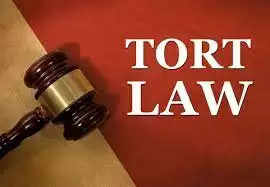Origin and historical development of the law of tort

The substantive law of torts in England arose out of the forms of common law procedures. It had its origin in royal writs issued by the Chancery. In theory, the writ could not be availed of in felonies but in practice, it was available in every case excluding that of murder if words charging a felony in a complaint were omitted. In the beginning, the procedure in a writ of trespass was having both civil and criminal aspects but in due course, civil action for trespass proceeded on different lines from criminal trespass which involved indictment for felony or misdemeanor. Again, at first, the action of trespass was available for injuries that were direct, forcible, and immediate, and did not cover indirect and consequential injuries, but later on, these injuries became actionable by the writ of trespass on the case or action on the case by virtue of statute called consimili cassu in 1285, and in course of time the procedure in action on the case became distinct from the action of trespass and thenceforward the line of development was clear. In the later part of the 19th century, prior to the Judicature Acts, the fields of tort were strewn with different forms of action having their own procedural variations which were finally unified by the Judicature Acts. Because of this historical development, we see substantive law secreting itself in procedure and the question has been raised whether this should be called the law of tort or the law of torts. According to Salmond, it is the law of torts, i.e., a constellation of certain specific and limited wrongs recognized by law in course of history and every plaintiff can only avail of the limited 'pigeonhole' categories to classify wrong against him and the doctrine Ubi jus ibi remedium is not applicable to find a remedy for every type of wrong. Judges too, feel great difficulty in creating new torts and in applying a rule to a novel case.
The other school makes a study of the law of torts as objective science, as something unique among the systems of law and social sciences which makes use of the court's power to award damages for regulation of social relations. In other words, emphasis is not put upon procedure but on general principles and exceptions to them which are applicable to the several species of tortious liability. Today, different torts are seen as having certain broad features in common and are enforced by the same kind of legal procedure. One school emphasizes the procedural aspects and asserts that forms of action still rule from their graves. The other looks for rationalization and optimism whereby judges can create new torts on the basis of general theory. Looked at from the formalistic and procedural point of view, the law of tort is merely the law of torts as judges rarely create new torts but from a broader and dynamic viewpoint tort is only a general theory of law of wrongs, and judges on the basis of this theory have been overcoming difficulties from time to time providing remedies in novel cases. One theory asserts circumscription, the other enlarges frontiers; one is skeptical and records dissatisfaction for limited developments, in the other gives contentment and exudes optimism. But both are mere variations of attitude and chosen methods of study of a lawyer on the one hand and of a student of law on the other. The lawyer needs to emphasize more the formal branch but the student or the theorist stresses the underlying general principles
